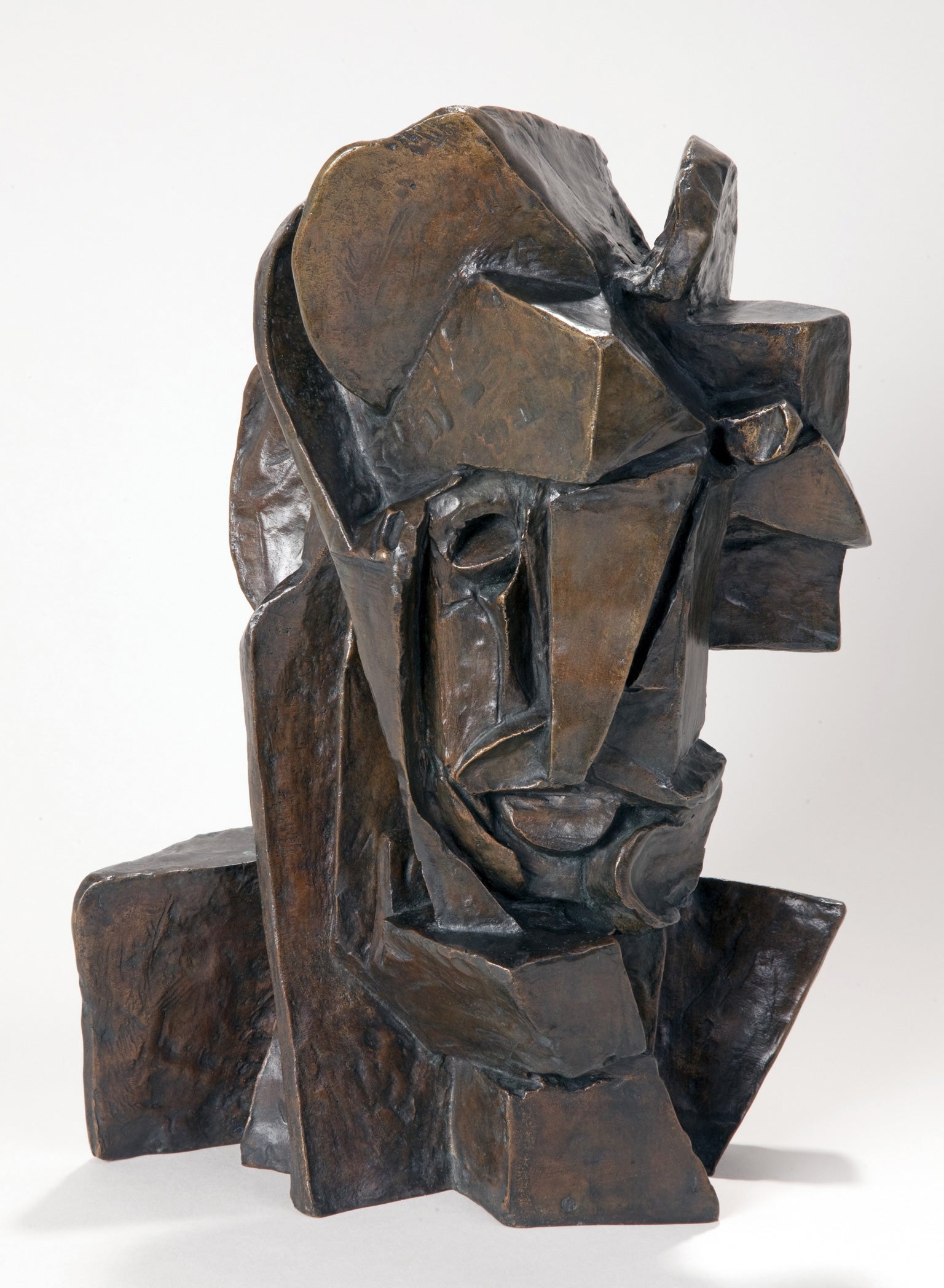IoS visual art review: 1913: The Shape of Time, Henry Moore Institute, Leeds Tracing the Century, Tate, Liverpool
A study of a single year in early Modernism is more insightful than a century of drawing

How long a century of art is, and how short. In 1913, Jacques-Ernest Bulloz photographed a bronze cast of Rodin's Burghers of Calais being lowered gingerly into place next to the House of Lords. As the sculpture swung earthwards, Eric Gill was chipping away at Christ on the Cross in Ditchling and Roger Fry was making lampstands for the Omega Workshops in Fitzroy Square. It was the end of an era, and the beginning of one.
In Moscow, in 1913, Alexander Archipenko, fired up by the Matisses he had seen at Sergei Shchukin's house, sculpted The Dance; in Paris, Giorgio de Chirico painted The Tower. Around the corner, two men were making work whose impact is still being felt today. Picasso's Bottle of Vieux Marc flicked a pair of rude Spanish fingers at the aforementioned Matisse by using a piece of wallpaper in its collage. In the process, it paved the way for Pop Art. More brazen yet, Marcel Duchamp made 3 Standard Stoppages by dropping metre-long threads on to strips of wet canvas, gluing these to glass slides, putting the slides in a box and declaring the result art. Next stop, Conceptual Art.
You can see all the above in a brilliant little show entitled 1913: The Shape of Time at the Henry Moore Institute in Leeds, clever not just for being small but for being subtle. Of course, my first paragraph was nonsense: in art, as in most things, eras don't begin or end in a neat 12 months. Nor was 1913 the only epochal year in early Modernism. If the HMI's curators had had access to them, they could have shown Malevich's first Suprematist pictures alongside bits of early Dada and a Picasso Harlequin or two and called their exhibition 1915. But they didn't. I suspect this show, using largely easy-to-borrow works, was cheap to put on, and none the worse for it.
What makes 1913 so elegant is that it tells a very long story in very few words – a kind of History of Early Modernism in 24 Objects. Some artists got what was happening, some didn't; some, such as Duchamp and Picasso, were too busy inventing it to care. Wryly across from a case of Fry's lampstands is a lampshade, painted by the Italian Cubist (and future Fascist) Ardengo Soffici: Soffici gets 1913, Fry does not. Four small bronze busts on four white plinths run the whole gamut of getting and not-getting. Emil Filla deeply gets it with Cubist Head, while his fellow-Czech, Otto Gutfreund, deeply does not with Viki. In the same year, Gutfreund has another go at modernity with the optimistically named Cubist Bust. Oh dear, oh dear, oh dear.
An oh dear, too, for Tracing the Century at Tate Liverpool. There seems to be a vogue among curators at the various Tates for trying to force connections between palpably unconnected works or genres. Maybe it's a leftover from the whole Dream/Future/Multistorey Car Park thing at the pre-new-hang Tate Modern. Anyway, it's time to stop.
Like a provincial restaurant, Tracing the Century's menu talks the talk but doesn't dish up the goods. It starts from the unsurprising premise that drawing was a catalyst for change in the art of the past 100 years, which is certainly true, although it was also true for the century before that and pretty well every century since the caves at Lascaux. Narrowing the focus, the show's rubric goes on to promise an "opening up [of] the conversation between figuration and abstraction that characterised art in the 20th century". That certainly sets the taste-buds tingling. Alas, what arrives at your table is curatorial fusion food of the very worst kind.
The first wall offers an ominous foretaste of what is to come. In sequence are drawings by artists born in 1839 (Paul Cézanne), 1879 (Paul Klee), 1922 (Richard Hamilton) and 1931 (Lee Bontecou). A sign notes that Hamilton was thinking about the flatness of Cézanne's 1905 watercolour Montagne Sainte-Victoire when he made his own, Out and Up, in 1951. Given the centrality of Cézanne to Modernist thought, this seems reasonable enough. But so what? What new understanding are we meant to take away from this about Hamilton, or Cézanne, or Modernism or, come to that, about drawing?
I really cannot say. In a show this big – around 100 artworks – there were bound to be lovely things, and there are. The curators have cast their net wide, so that we get drawing in and/or on a variety of media, including film (William Kentridge), ceramic (Grayson Perry) and iron filings (Cornelia Parker). But, irritatingly, Tracing the Century manages to be both arbitrary and over-organised at the same time – rambling vaguely from room to room while stopping to suggest implausible connections between unlike artists. I'm still scratching my head over the gluing-together of Andy Warhol and Marlene Dumas with the word "intimacy". Feel free to explain.
'1913: The Shape of Time': Henry Moore Institute, Leeds, to 7 Feb 2013. 'Tracing the Century': Tate Liverpool, to 20 Jan
Critic's Choice
New Chinese work is coming sharply into focus in the capital this winter. At London's Hayward Gallery, Art of Change: New Directions from China features nine artists who've been working for the past 30 years. It's heavy on installation and live work (till 9 Dec). The Notting Hill gallery Themes & Variations, meanwhile, is showing Chinese Design Today, as a new generation of designers reinterpret their cultural heritage (till 8 Dec).
Join our commenting forum
Join thought-provoking conversations, follow other Independent readers and see their replies
Comments